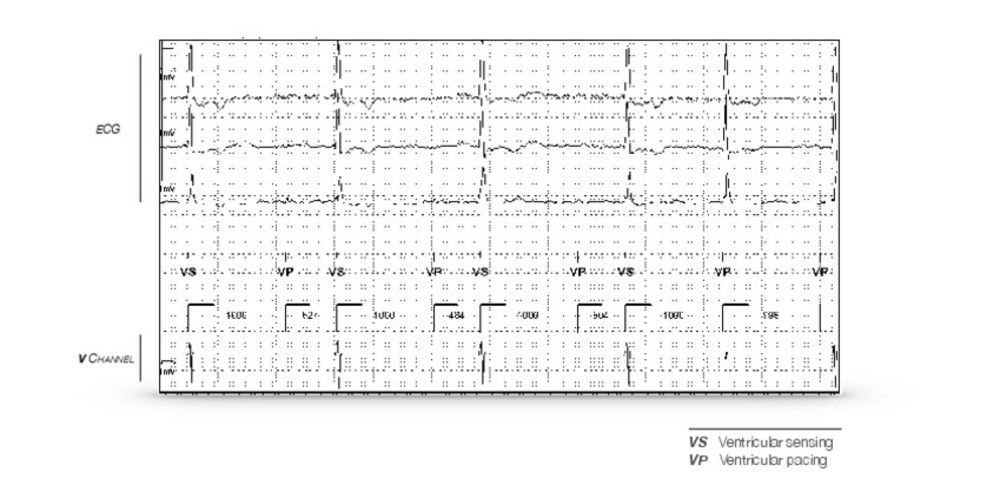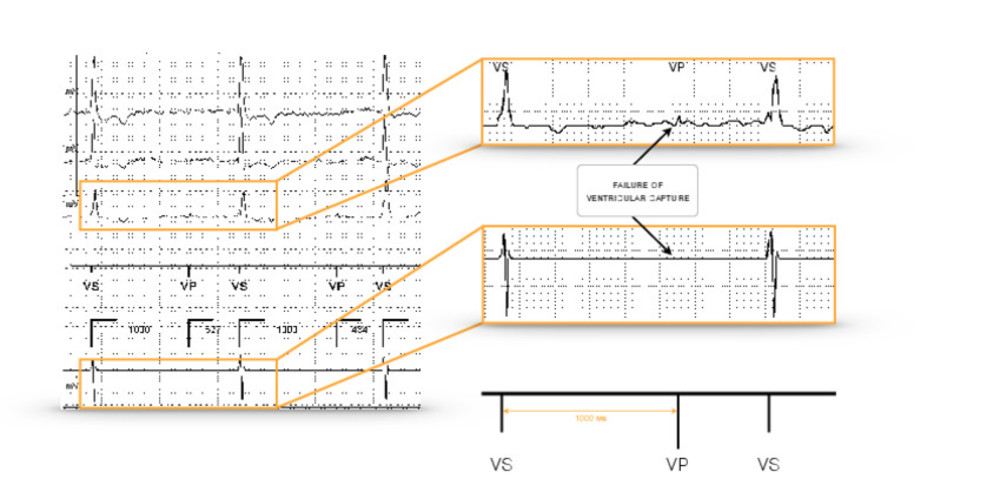loss of right ventricular capture
Tracing
Manufacturer Abbott
Device PM
N° 14
Patient
87-year-old man implanted with an AccentTM DR pacemaker for symptomatic slow AF; a few months after implantation, fatigue, dyspnea and lipothymia.

Graph and trace
The pacemaker is set in VVI mode 60 beats/minute (VS-VP interval of 1000 ms); proper sensing of intrinsic QRS; failure of ventricular capture; atrial fibrillation with altered although still present atrioventricular conduction (irregular intrinsic QRS).

Other articles that may be of interest to you

EGM recordings






The pacing threshold corresponds to the smallest electrical pulse, delivered outside of all natural refractory periods, capable of triggering the propagation of the depolarization wave. It can be measured in voltage (Volts) or in pulse width (milliseconds). The determination of the pacing threshold is of major importance since the programming of the voltage and duration of the pulse ultimately defines the safety margin and determines the energy consumption of the prosthesis and therefore the rate of battery wear. It is generally recommended to program a safety margin of 100% which corresponds to a double threshold voltage. This safety margin is designed to take into account the circadian variations of the pacing threshold, the latter of which are variably influenced from one subject to another by sleep, meal intake, physical activity, fever, etc.
This tracing reveals a loss of ventricular capture in a patient with chronic AF and impaired atrioventricular conduction. This patient was programmed with a ventricular pacing rate of 2.5 Volts for 0.5 ms. His symptomatology was highly suggestive, with a return to clinical signs observed in pre-implantation (fatigue, dyspnea, lipothymia). There was no obvious cause (drug, metabolic, macro-dislodgement of the lead, etc) to explain the increase in threshold (measured at 3 Volts for 0.5 ms). Given this elevation in threshold, the programming of the automatic pacing output adjustment should be evoked. Indeed, it is possible to program, in all contemporary pacemakers, an automatic ventricular threshold measurement function more or less associated with an automatic adjustment of the pacing amplitude.